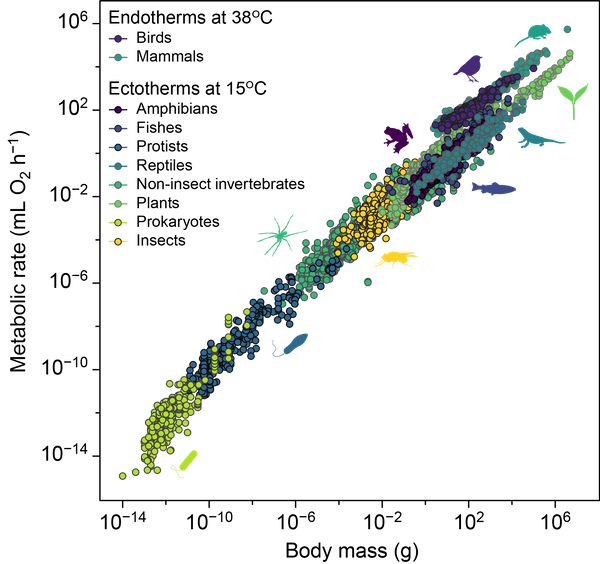Focus on "Why and how does metabolic rate scale with body size?" Animal satellite meeting
Why and how does metabolic rate scale with body size?
SEB Animal Section Satellite Meeting, 3–4 July 2022, Montpellier, France
Organised by Tommy Norin, DTU Aqua, Technical University of Denmark

Metabolic rate is tightly related to body size (body mass), but when mass increases, metabolic rate usually increases relatively less. This disproportionate, so-called allometric, scaling relationship between metabolic rate and body mass is fundamental to biology and widely applied, but also one of the most debated concepts in integrative and comparative physiology, ecology, and evolutionary biology.
Several theories and hypotheses have been put forward to explain why metabolic rate scales out of proportion to body mass, and why there appears to be variation in how steep this scaling relationship is among different taxa and physiological or ecological conditions (e.g. 'surface area', 'cell size', 'fractal distribution network', ‘dynamic energy budget’, and ‘metabolic-level boundaries’ theories or hypotheses). However, the lack of consensus on these important topics is a major barrier to our understanding of the pace at which organisms of different sizes and species expend energy and need to consume resources such as food and oxygen from the environment. It also limits our ability to predict how metabolic rate and body size (co)evolves, and how climate change affects metabolic demands and body sizes, as metabolic scaling exponents are used to model how these key organismal traits are affected by changing temperature and oxygen levels. The importance of metabolic scaling is clear, yet it remains one of the most controversial concepts in biology.

The overall aim of this satellite meeting is to bring together researchers working with metabolic scaling, to: (1) bring the field up to speed on state-of-the-art knowledge and research on metabolic scaling; (2) help understand how the vastly different views and opinions on metabolic scaling can persist despite more than a century of research (e.g. scaling in proportion to surface area or not, universal ¾-power scaling or not, governed by ecological vs. physical or geometric factors); and (3) identify and help streamline specific areas of research on metabolic scaling that will be particularly important for our further understanding of why and how metabolic rate scales with body size.
The meeting is being organised as part of the Animal Section of the SEB and will therefore have a focus on metabolic scaling of animals, but work on other organisms is welcome where this can provide insight into metabolic scaling in general.
The meeting will have a fantastic line-up of invited speakers (listed below) and is also open for both contributed talks and posters. It is of course also possible to attend without presenting, just remember to register for the meeting before the registration deadline.
You should attend this meeting is you are interested in organismal size and energetics.
Invited speakers:
Craig White, Monash University, Australia
Douglas Glazier, Juniata College, USA
Giulia Ghedini, Instituto Gulbenkian Ciência, Portugal
Brian Enquist, The University of Arizona, USA
Amanda Pettersen, University of Sydney, Australia
Andrew Hirst, Nottingham Trent University, UK
Jaap van der Meer, Wageningen Marine Research, Holland
Vojsava Gjoni, University of Geneva, Switzerland
